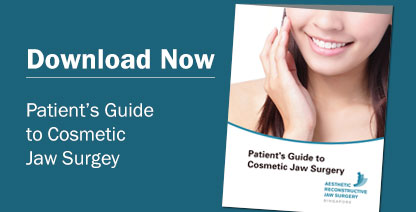Share this
Facial Aesthetics, Orthognathic Surgery and Elections
on September 2, 2015

The General Elections are here! The media is inundated with reports of the various candidates and their party manifestos. How do voters vote? In case you are getting worried that this blog is turning political, don’t. I would just like to take this opportunity to discuss the influence of facial attractiveness on election results.
In 2013, The New York Times published an article “Why Attractive Candidates Win”. There are plenty of theories attributed to why attractive people are more successful as people tend to associate all kinds of positive characteristics with good looks. Good looking people get hired more easily, get promoted faster at work, etc. This New York Times article proposes yet another argument that people vote for attractive candidates due to evolutionary adaptations for avoiding disease. It quoted some past research that features that are often linked with facial aesthetics , eg facial symmetry and proportion, are indicators of health. From there the authors postulated that in societies where people are worried about diseases, physically attractive politicians are in an advantageous position. They analysed the results of the 2010 United States congressional elections and noted that good-looking candidates were almost twice as likely to win in districts where there is a higher incidence of disease. However, in districts where health was not a concern, good looks have no impact of the election outcomes.
While this theory of why attractive people get more votes is relatively new, the hypothesis that there is a beauty bias has been around for a long time. In 1993, Hamermesh and Biddle published a paper “Beauty and the Labour Market”, where it was reported that below average looking men faced a 10% penalty in earnings while above average looking ones enjoyed a 5% premium. This study also showed a similar discrimination in women.
Back to the political arena, in the United States, the beauty bias was also cited as the reason why in the Kennedy-Nixon debates, television viewers gave higher ratings to Kennedy while radio listeners tended to support Nixon. Reading our local media’s coverage of the candidates, both in the mainstream and social media, reference is often made of a candidate’s looks. So what kind of look can help win votes?
Well, it depends on the voters. For the discerning voter, looks probably do not matter at all. Factors such as the political party of the candidate, his track record, his plans for the voters, are the deciding factors. However, in any electorate, there is a sizeable number who do not research the candidates. In a 2013 paper, the researchers from the University of Delaware noted that trustworthiness and “social dominance” are factors that influence voters and these two qualities are often judged on the basis of looks. People associate a certain type of look as being trustworthy and that is advantageous at the ballot box. A dominant face, one that appears aggressive, was found to be a negative factor as voters fear choosing a domineering leader.
Public office, like most jobs, mandates competence first and foremost. However, in the sea of competent people, physical attractiveness does play a significant role. However, what is deem physical attractiveness in one job may not be so in another. Many years ago, I had a young Caucasian expat who came to me for corrective jaw surgery. He had no significant facial deformity. In fact, he had a slightly smaller lower jaw which gave him a very youthful look. Although he was already in his mid twenties, he looked like a teenage schoolboy. While most people would like to look younger than they really are, this young man wanted to look older. He was working in an international bank and felt that his boyish looks caused his boss and clients to not take him seriously. He wanted to make his lower jaw more prominent by lengthening it as he felt that that would make him look more “manly”. We did the surgery and he did appear older and more matured and he became more confident.
As much as we like to say that beauty is only skin deep, the evidence does point towards a little bit of beauty bias. Looking at all our Members of Parliament, I cannot find a single one that has a dentofacial deformity. Although the study above noted the advantage to be gained from being exceptionally good looking in a competence-based occupation is not very much, the converse is not true. Below average looks, and dentofacial deformities can cause that, is penalized significantly more, even in occupations where facial attractiveness is not required.
Different dentofacial deformities may be associated with different negative character flaws where none exists. For example, facial asymmetry may give the impression of dishonesty due to the crooked appearance of the face. Anterior open bite, whereby the back part of the upper jaw developed excessively resulting in the front teeth not being able to meet, often gives an impression of being lacking in intellect. Such stereotypes are often portrayed in movies and television characters and that association is subliminally implanted into our subconscious. Gummy smiles and an underbite also tend to give an aggressive appearance. Orthognathic surgery can correct these facial deformities to give a more harmonious facial appearance. While that may not win a seat in Parliament, it does go some way towards eliminating some of the prejudices associated with certain facial stereotypes.
Share this
- Jaw Surgery (93)
- Dental Implants Singapore (90)
- Orthognathic Surgery (48)
- Replacing Missing Teeth (26)
- Missing Teeth Options (23)
- Underbite (23)
- Bone Grafting (21)
- Costs (18)
- Facial Aesthetics (18)
- Aesthetics (17)
- dental implants (16)
- corrective jaw surgery (15)
- BOTOX (11)
- Dermal Fillers (11)
- Wisdom teeth (10)
- Fixed Implant Dentures (8)
- Loose Dentures Singapore (6)
- Medisave (6)
- sleep apnea (6)
- Braces (5)
- Dental Pain (5)
- Dentures in Singapore (5)
- Loose Teeth (5)
- Tooth Extraction (5)
- jaw deformities (5)
- bimax (4)
- bone graft (4)
- maxillomandibular advancement (4)
- all-on-4 (3)
- bimaxillary protrusion (3)
- chin implant (3)
- facial asymmetry (3)
- full mouth dental implants (3)
- genioplasty (3)
- immediate implant (3)
- removal of an integrated dental implant (3)
- third molars (3)
- wisdom tooth surgery (3)
- My Dentures Don't Fit (2)
- VME (2)
- bone graft healing (2)
- distraction osteogenesis (2)
- medical tourism (2)
- obstructive sleep apnea (2)
- orthodontics (2)
- plastic surgery (2)
- CT guided dental implants (1)
- Double jaw surgery (1)
- Invisalign (1)
- Periodontal Disease (1)
- Permanent Dentures Singapore (1)
- before and after photos (1)
- facial trauma (1)
- fractured dental implant (1)
- oral appliance therapy (1)
- root canal treatment (1)
- veneers (1)
- vertical maxillary excess (1)
- September 2019 (2)
- July 2019 (2)
- May 2019 (2)
- August 2018 (1)
- October 2017 (1)
- September 2017 (2)
- August 2017 (1)
- June 2017 (2)
- May 2017 (4)
- April 2017 (1)
- March 2017 (1)
- February 2017 (3)
- January 2017 (3)
- December 2016 (1)
- November 2016 (2)
- October 2016 (4)
- September 2016 (9)
- August 2016 (5)
- July 2016 (11)
- June 2016 (14)
- May 2016 (6)
- April 2016 (2)
- March 2016 (1)
- January 2016 (7)
- December 2015 (10)
- November 2015 (4)
- October 2015 (9)
- September 2015 (7)
- August 2015 (1)
- July 2015 (6)
- June 2015 (3)
- May 2015 (7)
- April 2015 (5)
- March 2015 (8)
- January 2015 (5)
- December 2014 (7)
- November 2014 (7)
- October 2014 (6)
- September 2014 (8)
- August 2014 (5)
- July 2014 (7)
- June 2014 (8)
- May 2014 (9)
- April 2014 (10)
- March 2014 (6)
- February 2014 (8)
- January 2014 (3)
Subscribe by email
Email subscription




No Comments Yet
Let us know what you think